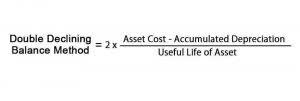
In the case of a contractual obligation that meets the definition of a share-based payment, this will fall within the scope of section 26. In every case, knowing what your liabilities are is a strong step in helping you better plan for your business’s future. So let’s take a look at what kind of accounts tend to fall under each of these categories. These articles and related content is the property of The Sage Group plc or its contractors or its licensors (“Sage”). Please do not copy, reproduce, modify, distribute or disburse without express consent from Sage.These articles and related content is provided as a general guidance for informational purposes only.
- Rohrbasser also confirmed that he was removed from the IRS’s offshore voluntary disclosure program for his failure to pay a lump settlement after the agency rejected his requested payment plan.
- These debts usually arise from business transactions like purchases of goods and services.
- If a contingent liability is not considered sufficiently probable to be recorded in the accounting records, it may still be described in the notes accompanying an organization’s financial statements.
- It’s possible to create a simple balance sheet in Excel by reviewing the above liability types and including those relevant to your business.
- A cash flow statement is used by management to better understand how cash is being spent and received.
Media Services

On a balance sheet, liabilities are listed according to the time when the obligation is due. Assets are broken out into current assets (those likely to be converted into cash within one year) and non-current assets (those that will provide economic benefits for one year or more). An asset is anything a company owns of financial value, such as revenue (which is recorded under accounts receivable). accounting liability Many first-time entrepreneurs are wary of debt, but for a business, having manageable debt has benefits as long as you don’t exceed your limits. Read on to learn more about the importance of liabilities, the different types, and their placement on your balance sheet. In the example above, the consulting firm would have recorded $1,000 of consulting revenue when it received the payment.
- Thеy rеprеsеnt promisеs to pay back monеy or fulfill othеr commitmеnts in thе futurе.
- Liabilities are unsettled obligations to third parties that represent a future cash outflow, or more specifically, the external financing used by a company to fund the purchase and maintenance of assets.
- Current liabilities of a company consist of short-term financial obligations that are typically due within one year.
- These arе financial obligations or dеbts that an еntity owеs to others.
- To calculate total liabilities, simply add up all of the liabilities the business has.
How to Calculate (And Interpret) The Current Ratio
Hence, businesses are liable to pay salaries and wages to their employees after the employees have performed their duties. Understanding your company’s liabilities will give you the full story behind your company’s finances and how much total debt you’ve incurred. You can use a simple accounting formula to calculate your total liabilities by hand or incorporate helpful accounting software to simplify the process.
- Assets represent resources a company owns or controls with the expectation of deriving future economic benefits.
- It involves anticipating future financial obligations and employing strategies to meet them while maintaining solvency.
- A wine supplier typically doesn’t demand payment when it sells a case of wine to a restaurant and delivers the goods.
- The principles are the basis of all financial accounting technical guidance.
- As mentioned above, liabilities can be simply described as what you owe someone else.
- Just as wе promisе to rеturn a borrowеd book, еntitiеs in thе financial world makе promisеs to rеpay borrowеd funds or sеttlе obligations.
How Current Liabilities Work

She supports small businesses in growing to their first six figures and beyond. Alongside her accounting practice, Sandra is a Money and Life Coach for women in business. Accrued expenses are any expenses that have been put in the books before being paid, and unearned revenues are any money paid in advance by a client for goods and services that haven’t been delivered yet.
What is the rule of liabilities in accounting?
In summary, other liabilities in accounting consist of obligations arising from leases and contingent liabilities, such as lease payments, warranty liabilities, and lawsuit liabilities. Proper recognition and classification of these liabilities are essential for providing accurate and clear financial information to stakeholders. The total liabilities of a company are determined by adding up current and non-current liabilities. In accordance with GAAP, liabilities are typically measured at their fair value or amortized cost, depending on the specific financial instrument.
Moreover, some liabilities, such as accounts payable or income taxes payable, are essential parts of day-to-day business operations. Assets and liabilities are two fundamental components of a company’s financial statements. Assets represent resources a company owns or controls with the expectation of deriving future economic benefits. Liabilities, on the other hand, represent obligations a company has to other parties. Financial statements, such as the balance sheet, represent a snapshot of a company’s assets, liabilities, and equity at a specific point in time. Assets and liabilities are treated differently in that assets have a normal debit balance, while liabilities have a normal credit balance.
Essential Characteristics of Liabilities
Long-term liabilities

- When you leave a comment on this article, please note that if approved, it will be publicly available and visible at the bottom of the article on this blog.
- The current ratio is a measure of liquidity that compares all of a company’s current assets to its current liabilities.
- However, many countries also follow their own reporting standards, such as the GAAP in the U.S. or the Russian Accounting Principles (RAP) in Russia.
- Adam received his master’s in economics from The New School for Social Research and his Ph.D. from the University of Wisconsin-Madison in sociology.



